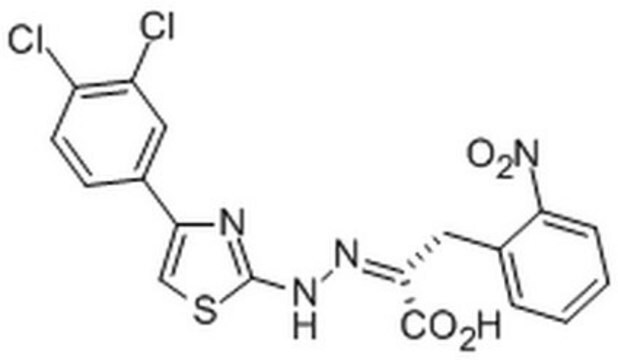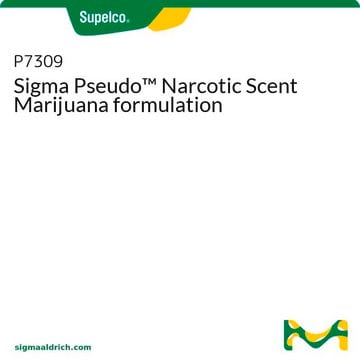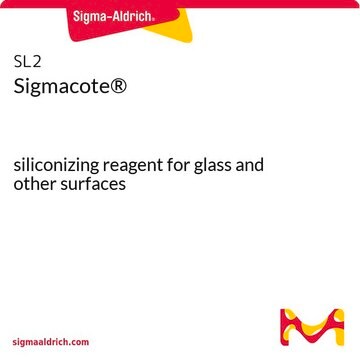324517
eIF4E/eIF4G Interaction Inhibitor, 4EGI-1
The eIF4E/eIF4G Interaction Inhibitor, 4EGI-1, also referenced under CAS 315706-13-9, controls the biological activity of eIF4E/eIF4G interaction. This small molecule/inhibitor is primarily used for Phosphorylation & Dephosphorylation applications.
别名:
eIF4E/eIF4G Interaction Inhibitor, 4EGI-1, 2-((4-(3,4-Dichlorophenyl)-thiazol-2-ylhydrazono)-3-(2-nitrophenyl))propionic acid, eIF4F Inhibitor I
登录查看公司和协议定价
所有图片(1)
About This Item
推荐产品
品質等級
化驗
≥98% (sum of two isomers, HPLC)
形狀
solid
製造商/商標名
Calbiochem®
儲存條件
OK to freeze
protect from light
顏色
yellow
溶解度
DMSO: 100 mg/mL
運輸包裝
ambient
儲存溫度
2-8°C
InChI
1S/C18H12Cl2N4O4S/c19-12-6-5-10(7-13(12)20)15-9-29-18(21-15)23-22-14(17(25)26)8-11-3-1-2-4-16(11)24(27)28/h1-7,9H,8H2,(H,21,23)(H,25,26)/b22-14+
InChI 密鑰
KFRKRECSIYXARE-HYARGMPZSA-N
一般說明
A cell-permeable hydrazone compound that reversibly binds eukaryotic translation initiation factor 4E (eIF4E; KD = 25 µM) and disrupts eIF4E/eIF4G, but not eIF4E/4E-BP1, complex formation. Reported to downregulate the protein, but not mRNA, levels of c-Myc and Bcl-xL in Jurkat cells (8 h), leading to apoptotic cell death after prolonged exposure (24 h, IC50 = ~ 25 µM). Also available as a 25 mM solution in DMSO (Cat. No. 324519).
A cell-permeable hydrazone compound that reversibly binds eukaryotic translation initiation factor 4E (eIF4E; KD = 25 µM) and disrupts eIF4E/eIF4G, but not eIF4E/4E-BP1, complex formation. Reported to downregulate the protein, but not mRNA, levels of c-Myc and Bcl-xL in Jurkat cells (8 hrs), leading to apoptotic cell death after prolonged exposure (24 hrs, IC50 ~25 µM).
包裝
Packaged under inert gas
警告
Toxicity: Harmful (C)
重構
Following reconstitution, aliquot and freeze (-20°C). Stock solutions are stable for up to 6 months at -20°C.
其他說明
Moerke, N. J., et al. 2007. Cell128, 257.
法律資訊
CALBIOCHEM is a registered trademark of Merck KGaA, Darmstadt, Germany
儲存類別代碼
11 - Combustible Solids
水污染物質分類(WGK)
WGK 3
閃點(°F)
677.1 °F - (calculated)
閃點(°C)
358.4 °C - (calculated)
其他客户在看
Xinna Li et al.
Aging cell, 21(9), e13685-e13685 (2022-08-06)
Glycosylphosphatidylinositol-specific phospholipase D1 (GPLD1) hydrolyzes inositol phosphate linkages in proteins anchored to the cell membrane. Mice overexpressing GPLD1 show enhanced neurogenesis and cognition. Snell dwarf (DW) and growth hormone receptor knockout (GKO) mice show delays in age-dependent cognitive decline. We
Gerald C Tiu et al.
Developmental cell, 56(14), 2089-2102 (2021-07-10)
In ribosomopathies, perturbed expression of ribosome components leads to tissue-specific phenotypes. What accounts for such tissue-selective manifestations as a result of mutations in the ribosome, a ubiquitous cellular machine, has remained a mystery. Combining mouse genetics and in vivo ribosome profiling
Melisa Herrero et al.
Cells, 10(8) (2021-08-28)
Translation initiation factor 2B (eIF2B) is a master regulator of global protein synthesis in all cell types. The mild genetic Eif2b5(R132H) mutation causes a slight reduction in eIF2B enzymatic activity which leads to abnormal composition of mitochondrial electron transfer chain
Kathrin Leppek et al.
Molecular cell, 80(6), 980-995 (2020-11-18)
Ribosomes have been suggested to directly control gene regulation, but regulatory roles for ribosomal RNA (rRNA) remain largely unexplored. Expansion segments (ESs) consist of multitudes of tentacle-like rRNA structures extending from the core ribosome in eukaryotes. ESs are remarkably variable
我们的科学家团队拥有各种研究领域经验,包括生命科学、材料科学、化学合成、色谱、分析及许多其他领域.
联系技术服务部门








